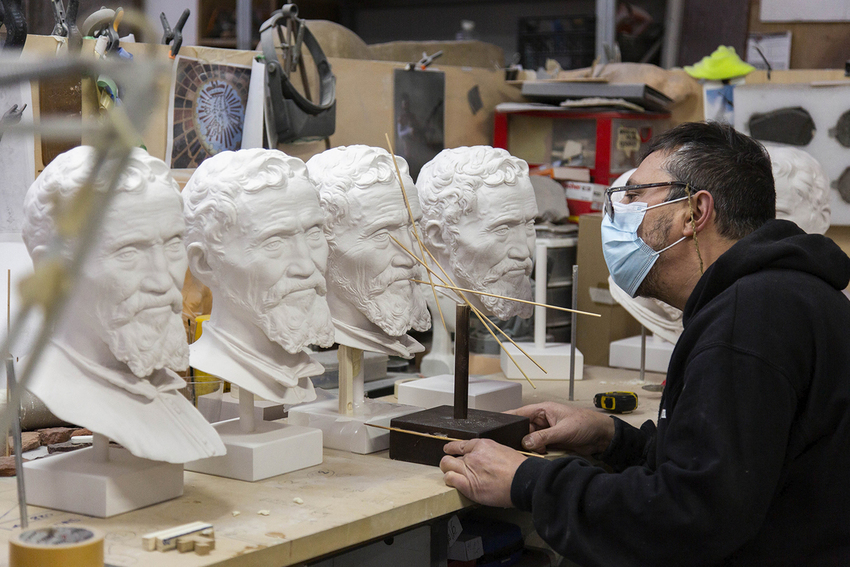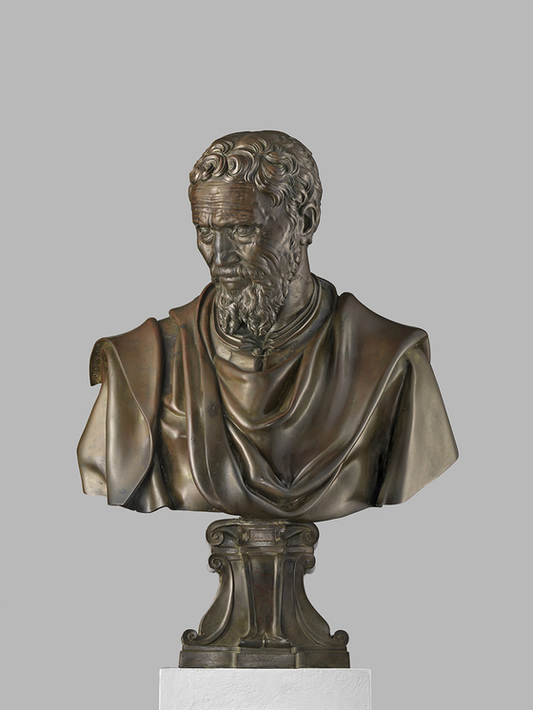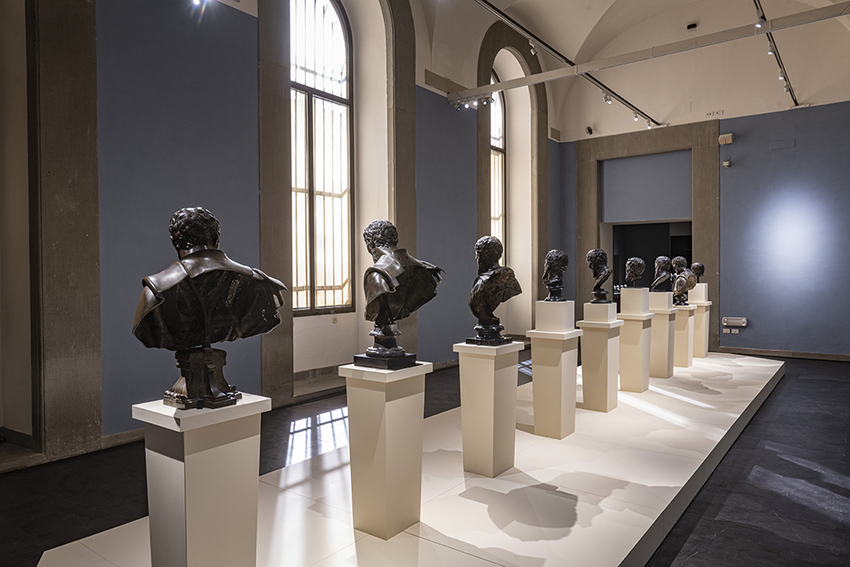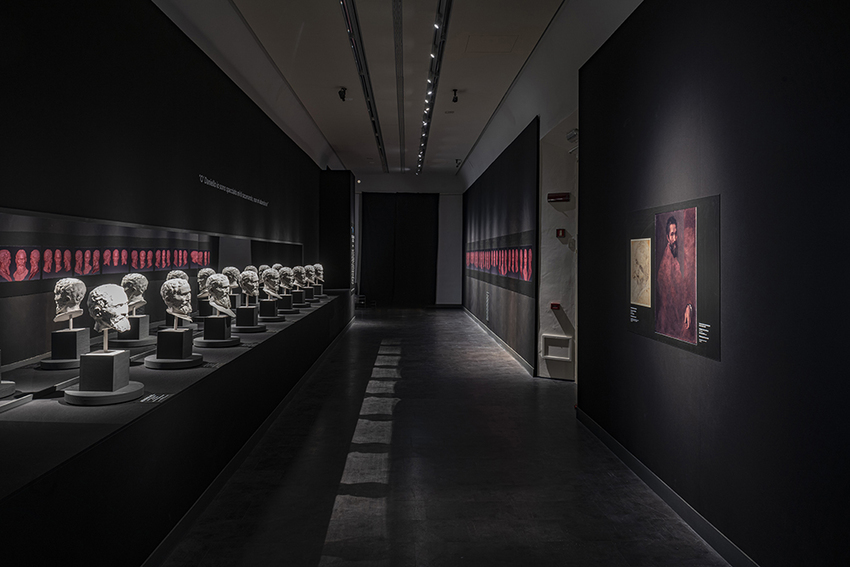
The 3D printed busts in Factum’s workshop © Oak Taylor-Smith for Factum Foundation
The exhibition ‘The Bronze Effigy of Michelangelo by Daniele da Volterra’ (15 February – 31 July, 2022), curated by Cecilie Hollberg at the Gallerie dell’Accademia in Florence, reunited for the first time nine bronze busts from various collections around the world. Direct comparison has revealed both similarities and differences, and much debate still surrounds the ‘genealogy’ between the different casts.
Each of the busts was recorded by Factum Foundation’s experts using strictly non-contact technologies: a structured white light scanner (Breuckmann Smartscan3D-HE) and photogrammetry. The use of both techniques, even on shiny surfaces such as bronze, is capable of obtaining an extremely accurate relief of the surfaces once the two sets of data have been combined into a 3D model using specialised software.
The first busts to be digitised were those in Florence (Gallerie dell’Accademia, Casa Buonarroti and Museo del Bargello), followed by those in the collections of the Museo della Città “Luigi Tonini” in Rimini, the Castello Sforzesco in Milan and the Musei Capitolini in Rome; the team then worked on the busts in the Musée Jacquemart-André and the Louvre in Paris, finishing with the one in the Ashmolean Museum in Oxford. Coordination and collaboration with the respective institutions enabled the work to be completed in just over two weeks. In January 2022, the bust inside the Musée Bonnat in Bayonne was also added to the recordings.

Pedro Miró recording the bust inside the Museo Nazionale del Bargello © Ferdinand Saumarez Smith for Factum Foundation

[Left] The structured white light scanner records the shapes in real time © Ferdinand Saumarez Smith for Factum Foundation – [Right] Close-range photogrammetry was used to capture the details © Ferdinand Saumarez Smith for Factum Foundation

After mapping the focal points, each bust was aligned according to a common imaginary line © Factum Foundation

The alignment line was manually found in Factum’s workshop © Teresa Casado for Factum Foundation

The possible genealogy of the busts according to Adam Lowe © Factum Foundation
‘Michelangelo: l’effigie in bronzo di Daniele da Volterra’
Research day, March 21st, 2022
Galleria dell’Accademia, Florence
Adam Lowe and Voula Paraskevi Natsi were invited to participate in the research day preceding the publication of the exhibition catalogue.
























